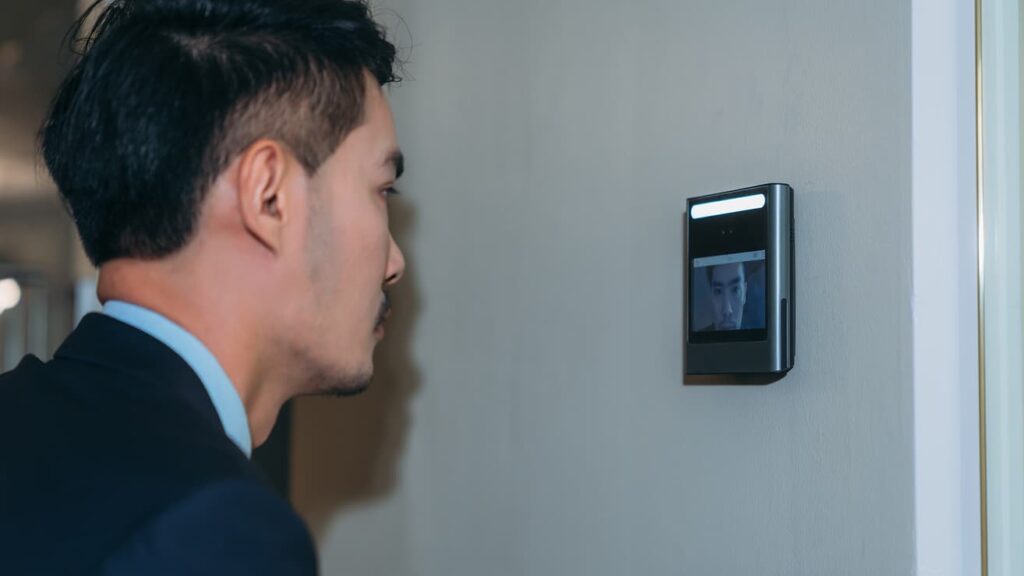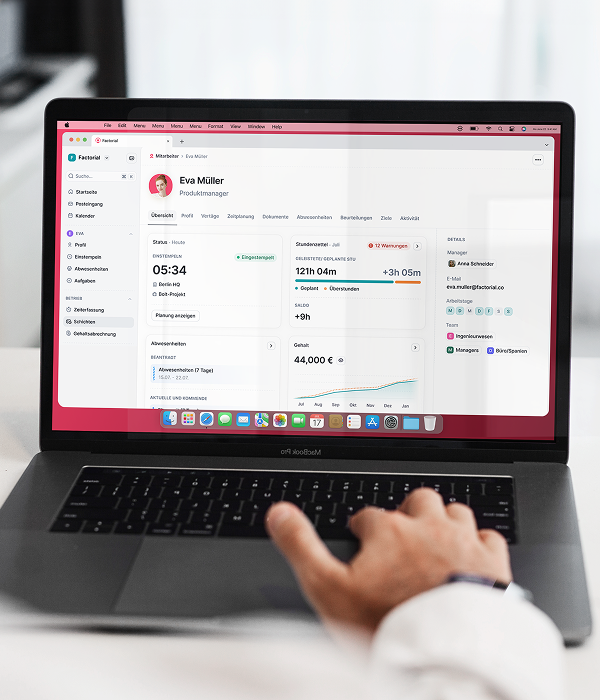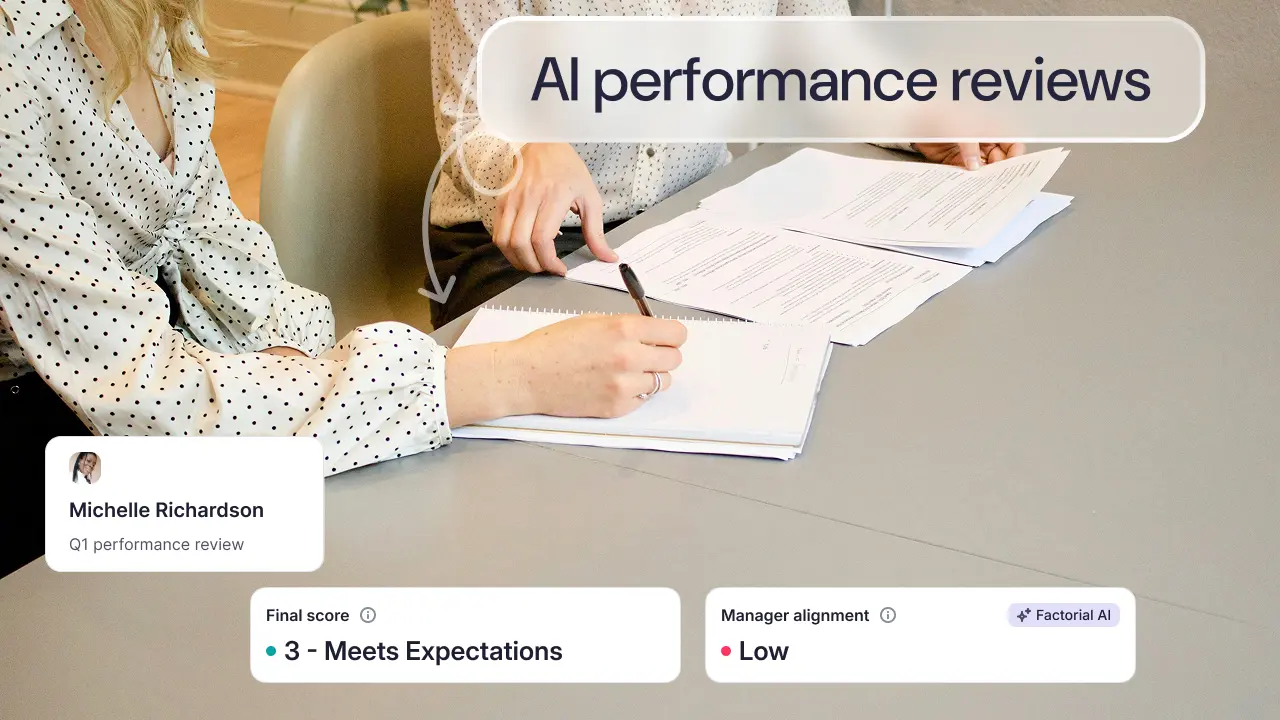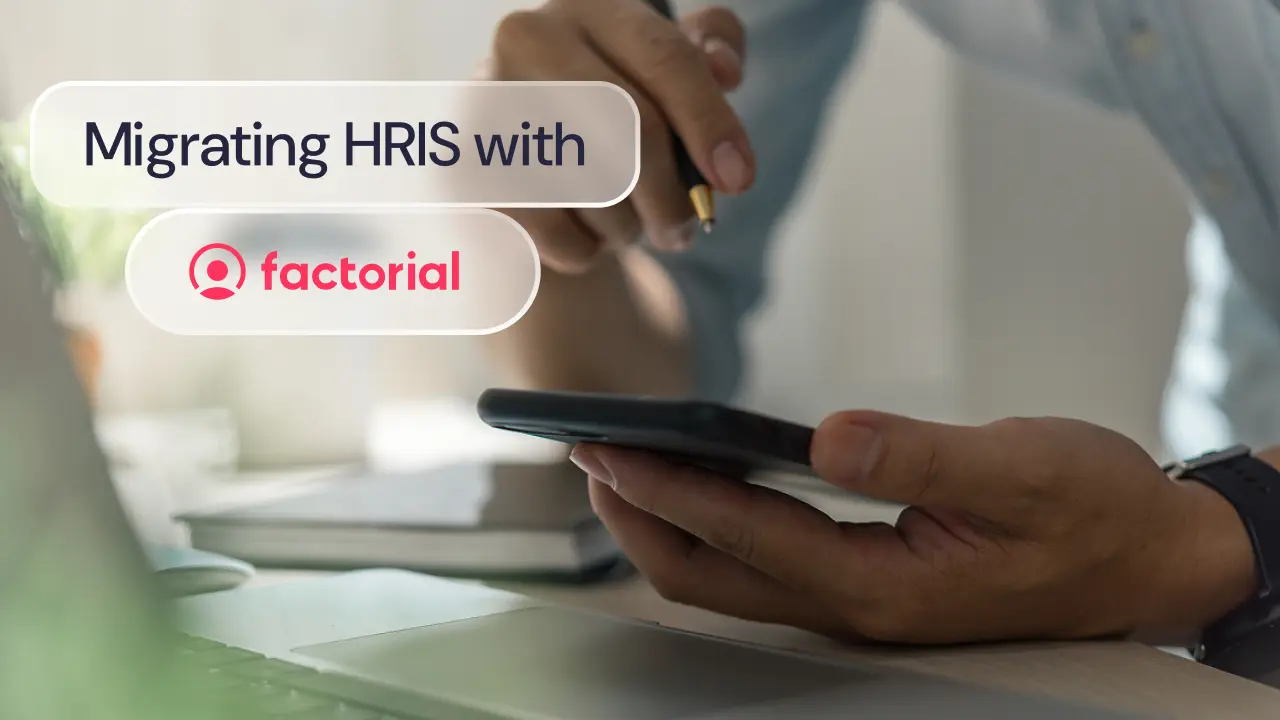Biometric tools, including fingerprint, eye, and facial scanning technology, are being adopted by an increasing number of employers in the US. The right tech can help you create more secure physical access systems and support alternate working arrangements, including remote work. One such example is facial clocking. A time clock app with facial recognition can help you create an efficient, accurate, and secure system for managing employee time and attendance in your organization. So, what exactly is facial clocking? What are the advantages of using facial recognition time clocks? And which features should you look for before you invest in a software solution?
💡Gain full visibility into your employee hours. Download our time and attendance template.
What is a Facial Clocking? Facial Clocking vs. Facial Recognition Time Clock?
Facial recognition time tracking, also known as facial clocking, refers to the use of facial recognition technology to track and record employee attendance and working hours. It involves capturing and analyzing an individual’s facial features to verify their identity and track their time-related activities.
A facial recognition time clock is an employee clock-in system that uses this facial recognition technology. Oftentimes, facial time clocks are included in time and attendance software within their mobile app for all kinds of teams, whether they work remotely or on-site. These electronic time clocks typically use cameras or specialized devices equipped with facial recognition algorithms to capture facial images or video footage.
When an employee wants to clock in or out, they simply need to present their face to the time clock. The technology then analyzes their facial features and compares them to a database of pre-registered faces to determine their identity. The timestamp is then sent to time and attendance software where time worked is tracked through a digital timecard or timesheet. This enables you to accurately track when employees clock in and out, take breaks, and perform other time-related actions.
📌 Looking for the best employee clock-in system for your team? Check out our top 9 employee clock-in systems choices.

5. Advantages of Facial Clocking
Compared to more traditional time clocks that rely on physical cards, badges, or manual time entries, a facial recognition time clock provides a contactless and efficient method for recording employee attendance. It also offers enhanced security, reduces the likelihood of time theft or buddy punching, and provides real-time verification of employee identities. As a result, facial recognition clock-in systems are commonly used in a variety of industries and organizations to improve accuracy, streamline attendance management, and enhance overall workforce efficiency.
Let’s take a look at some of the key benefits of facial clocking in a bit more detail.
1. Optimal security
Facial recognition time clocks offer improved security measures compared to traditional methods for tracking time and attendance.
This includes:
- Reduced identity fraud. Facial clocking technology relies on unique facial features to identify individuals. This makes it difficult for employees to impersonate others or engage in identity fraud. The system compares the captured facial image with stored templates, ensuring that the person clocking in or out is the authorized individual.
- Access control integration. In certain environments, facial recognition time clocks can be integrated with access control systems. This allows organizations to control entry to restricted areas based on facial recognition, ensuring that only authorized personnel gain access.
- Data encryption. Most facial clocking systems use encryption and secure storage practices to protect captured images and biometric data. This helps guard against unauthorized access and potential breaches, safeguarding sensitive employee information.
2. Prevents buddy punching & time theft
Because a facial recognition time clock scans and analyzes specific facial features, the technology eliminates the risk of buddy punching. This is when an employee clocks in or out on behalf of another.
Facial clocking also protects you against time theft, where employees overreport work hours or manipulate their time records in any other way. That way, you can be sure that your attendance data is reliable and accurate.
3. Accurate employee attendance tracking
Face recognition clocking-in systems create an audit trail, recording the date, time, and images of each clock-in and clock-out event. This creates a robust record of employee attendance, promoting transparency and accountability. That way, if there are any discrepancies or disputes relating to working hours, you can refer to the system log to verify an employee’s attendance.
4. Contactless sign-in system
Facial recognition time clocks are contactless so there is no need for employees to touch shared surfaces, such as sign-in sheets, fingerprint scanners, or keypads. This helps reduce the spread of germs and ensures a hygienic workplace environment. This is especially important in environments where maintaining cleanliness and minimizing contact is crucial, such as hospitals or during a pandemic.
5. Automated time-tracking
As we mentioned in the intro, the right facial clocking solution can help you create more secure physical access systems and support hybrid, remote, and flexible working arrangements.
How?
Because, as employee time tracking is automated with facial clocking, you no longer have to rely on manual data entry or paper timesheets. This eliminates the risk of human error and helps you create a much more accurate record of working hours. This makes it much easier for you to monitor employee attendance, which is a big benefit for workforce management, scheduling, and reporting. It’s especially beneficial if you have remote workers or offer complex working arrangements such as a 9/80 work schedule.
How do Facial Recognition Time Clocks Work?
Facial recognition time clocks use advanced technology to capture and analyze an individual’s facial features. Although facial clocking devices can vary, they typically operate as follows:
- Image capture. When an employee approaches the face scan time clock, a camera captures an image of their face.
- Facial feature extraction. Captured images are processed using facial recognition algorithms. These algorithms analyze the image to identify key facial features, such as the distance between the eyes, the shape of the nose, or the contours of the face.
- Facial template. A unique facial template or biometric signature is created for each employee based on extracted facial features. This template serves as a reference point for future image scans.
- Real-time verification. Each time an employee clocks in or out, they simply present their face to the camera. This can be done with a physical facial recognition time clock or, in some cases, through an app on a mobile device. The system then compares the captured image with the stored facial templates to verify the employee’s identity.
- Attendance tracking. If a match is found and the employee’s identity is confirmed, the system records the clock-in or clock-out time on the employee’s attendance record. This data is typically stored in a database for further processing, reporting, and integration with payroll and workforce management systems. You can then use this information at the end of each pay period to generate accurate payslips in line with hours worked.
Factorial’s Facial Clocking System
Factorial’s business management software includes a time card app that uses facial clocking technology. With the app, employees can easily clock in and out using their mobile devices, eliminating the need for traditional punch clocks or manual time cards. The app’s facial recognition time clock software tracks worked hours, breaks, and overtime. This allows you to create an accurate, secure, and efficient system for attendance management. Plus, Factorial’s facial clocking app integrates with our payroll and performance management tools so that all your data is centralized and easily accessible.
Specifically, you can use Factorial’s facial clocking technology to:
- Create a contactless system for punching in and out. Employees can record their attendance using their faces instead of badges, PINs, or manual timesheets. This is especially beneficial if you have remote employees as they can scan their faces straight from any mobile device with a camera.
- Keep track of geolocations. That way you can keep track of who’s working where. This is especially useful if your employees work at multiple sites.
- Track employee working hours. Both managers and employees can view working hours with a few clicks. Managers can also monitor shifts, holidays, and absences.
- Approve timesheets. Managers can approve or reject employee timecards generated through our integrated timesheet software with a digital signature. This makes it easier to manage scheduling, overtime, absences, and staffing levels. It also speeds up the process of sending payslips.
- View reports and data on hours and attendance. You can download weekly summaries and keep an eye on the hourly productivity of employees.
Investing in the right time-tracking tools
When it comes to employee time and attendance, it’s vital that you make sure you invest in the right time-tracking tools. This is particularly important these days given how many employees now work remotely. You need a reliable system that helps you accurately track and record employee working hours so that you have all the data you need for payroll, attendance monitoring, and performance management.
Above all, make sure you invest in a facial recognition clocking-in machine that offers:
- Accuracy and reliability. Evaluate the accuracy and reliability of the facial recognition technology used in the time clock system. Look for systems with high precision in identifying and matching facial features to ensure accurate attendance tracking.
- Scalability and integration: Consider the scalability of the system to accommodate your organization’s workforce size and growth. You also need to make sure that you can easily integrate it with your payroll software, as with Factorial’s solution.
- Data security and privacy. Facial clocking systems deal with sensitive biometric data. Make sure you invest in a solution that includes data security measures. This includes encryption, access controls, and compliance with privacy regulations.
- Support and maintenance. Make sure the vendor you pick offers technical assistance, software updates, and maintenance.
- User experience. The time clock you pick needs to be intuitive and easy for employees to use. This will minimize any potential barriers or frustrations during the clock-in and clock-out process.
Factorial’s facial clocking technology offers all these features. By investing in our intuitive and user-friendly solution, you will have real-time access to accurate, reliable, and secure attendance and time-tracking data. That way, you can streamline your payroll processes, better manage your workforce, and boost the overall productivity of your business.
FAQ
Are facial recognition time clocks legal?
Generally yes, facial recognition time clocks are legal. They are unregulated at a federal level; however, 23 states have regulations and restrictions regarding biometric data.
Is there an app that can do facial recognition?
Yes, there are many apps with facial recognition capabilities. One of the best facial clocking apps is Factorial – its time clock with facial recognition syncs with
How accurate are facial clocks?
Facial recognition time clocks are highly accurate. Recent studies from the NIST prove high accuracy, but results are often affected by environment and image quality.
What happens when a face recognition time attendance system doesn’t recognize an employee?
When a facial time clock fails to recognize an employee, you can attempt to re-scan, enable a secondary verification method, or re-enroll employees to configure the system again.


